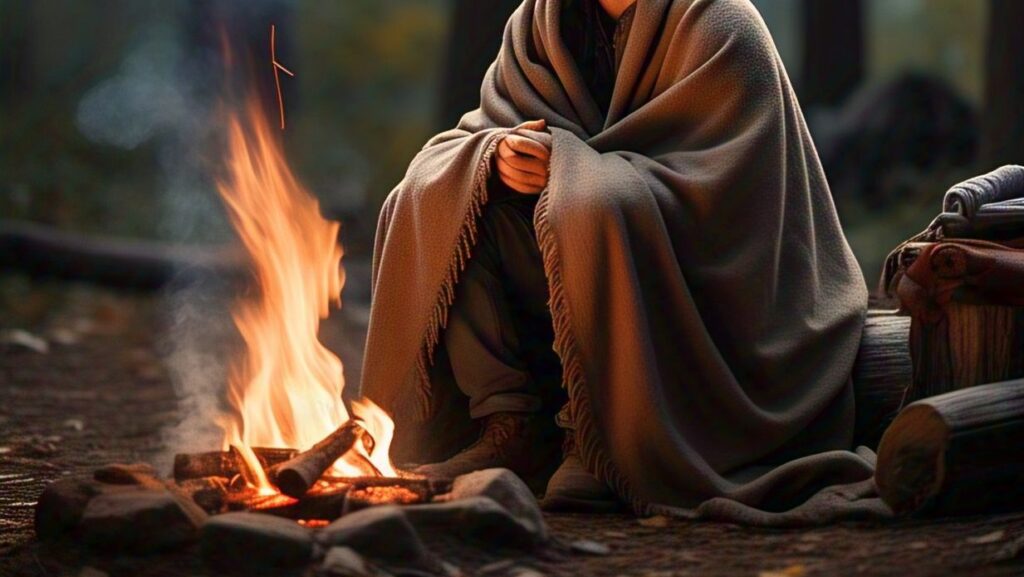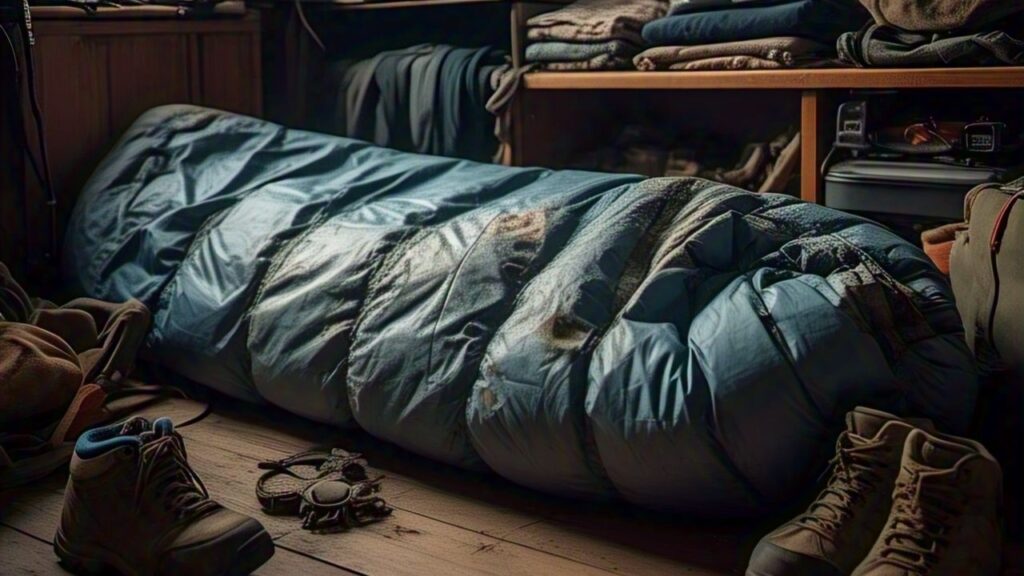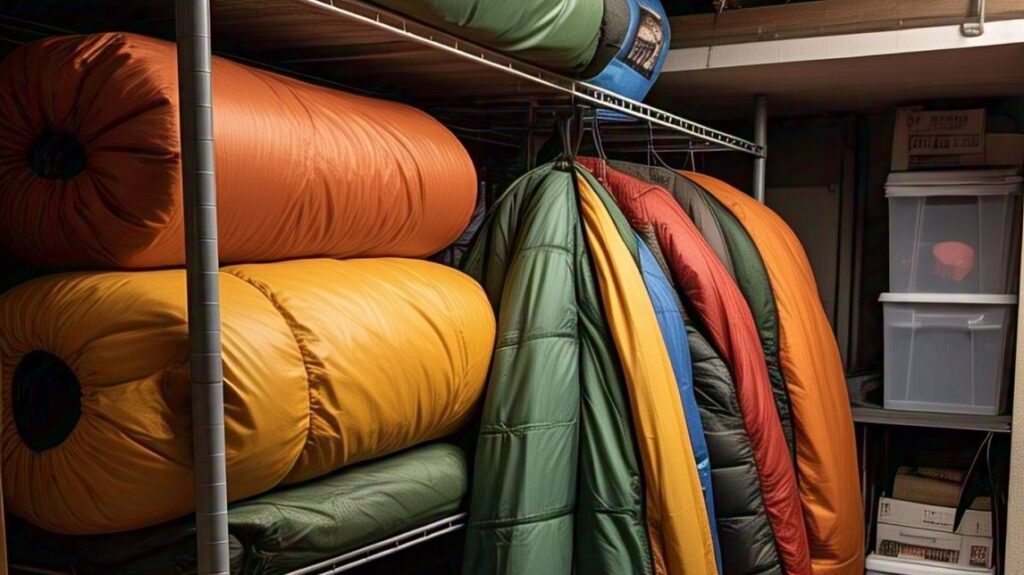I. Ready, Set, Snooze!
Have you ever wondered if sleeping in a sleeping bag might be doing more harm than good?
Well, the answer is no and yes!
Sleeping in a sleeping bag is not inherently bad as long as you follow SOPs for sleeping in it.
And that’s exactly why we wrote this article.
Quick Answers
- Sleeping in a sleeping bag is safe when used correctly.
- Overheating and poor ventilation can lead to discomfort and health risks.
- Choosing the right insulation and design ensures proper warmth and mobility.
- Proper sleep posture and support accessories boost comfort.
- Environmental conditions directly affect sleeping bag performance.
- Matching a sleeping bag to your body size and sleeping style is crucial.
II. Understanding Sleeping Bags
Before we move to our main topic, understanding sleeping bags given the context of the problem is crucial. Here is what you need to know.
Design and Materials
Sleeping bags are built using different materials, each affecting comfort in its own way.
Synthetic insulation is durable and performs well in damp conditions, while down insulation offers superior warmth-to-weight ratio.
The choice of fabric also matters.
Water-resistant polyester is common, providing protection against light moisture without weighing you down.
Construction styles differ too.
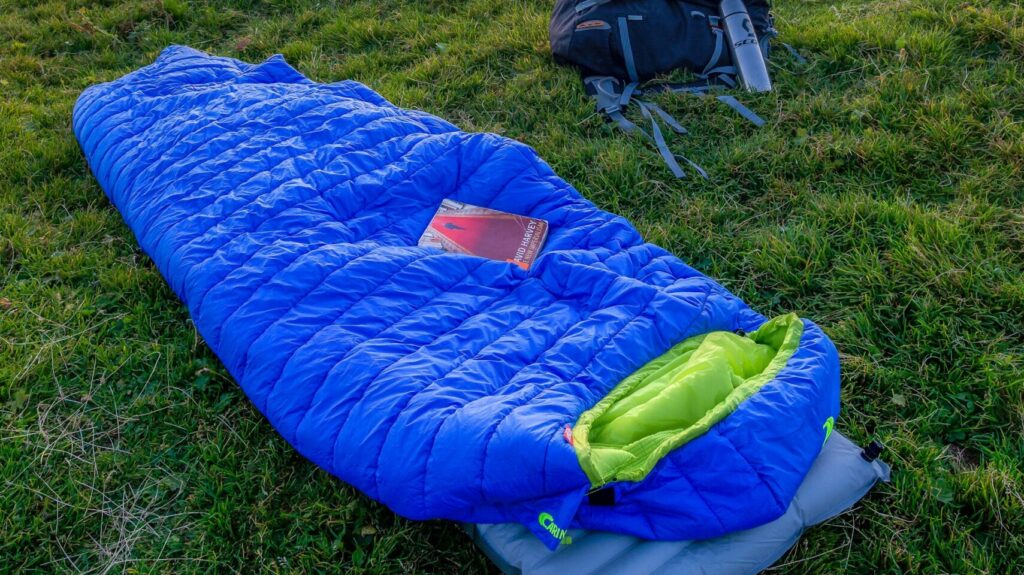
Mummy-style bags offer a snug fit, which can improve heat retention, but might feel confining for some sleepers.
In contrast, rectangular bags provide extra room for movement, though they may not trap heat as efficiently.
Each design choice impacts how you sleep.
The right combination of materials and construction ensures a balance between warmth, comfort, and mobility.
Temperature and Insulation
Sleeping bag temperature ratings are your first hint at how well a bag keeps you warm.
They guide you to choose the right level of warmth for the expected chill.
Here are various environments and the ideal temperature ratings for them:
Image | Environment | Temperature Rating (°F) |
|---|---|---|
 | Warm weather, summer camping | 50°F and above |
 | Mild weather, spring/fall nights | 30°F to 50°F |
 | Cold weather, late fall/winter | 15°F to 30°F |
 | Harsh winter, snowy conditions | 0°F to 15°F |
 | Extreme cold, high-altitude use | -20°F to 0°F |
 | Arctic conditions, expeditions | Below -20°F |
Furthermore, Down offers top-notch heat retention, while synthetic insulation shines in damp conditions.
The right temperature balance matters for health too.
A bag that’s too warm can lead to overheating, while one that’s too cold may leave you shivering all night.
Ultimately, matching a sleeping bag’s rating to your environment and needs is key to a safe, comfortable sleep.
III. Is Sleeping in a Sleeping Bag Bad?
Sleeping in a sleeping bag is not inherently bad.
However, there are several things that can snatch a good night’s sleep from you, if gone wrong.
Here are those things described in detail.
Health and Safety Considerations
Overheating is a real risk.
A sleeping bag that traps too much heat can leave you restless and even dehydrated.
Adequate ventilation is essential to prevent this buildup while ensuring a steady flow of fresh air.
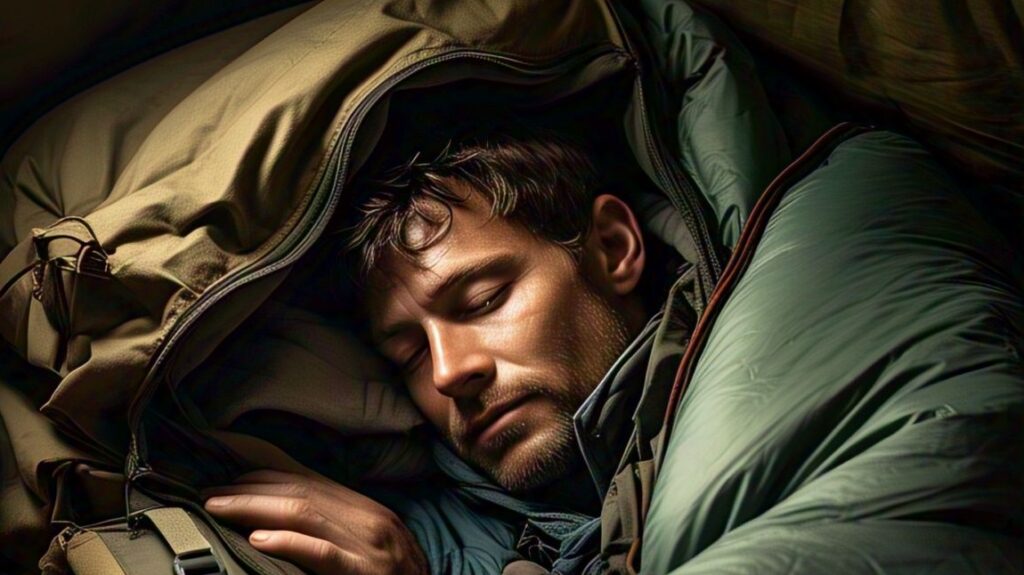
Body alignment matters.
When space is tight, you might end up twisting your neck, shoulders, or lower back into awkward positions.
This twisting can cause stiffness or soreness, especially if you maintain these unnatural angles for several hours.

Ideal sleeping posture means your head, shoulders, and hips should align in a straight line when lying on your back.
For side sleepers, ensure your spine curves naturally, using a pillow that supports the neck without forcing it into an angle.
A medium-firm pillow of moderate height (about 4-6 inches) typically works well.

Misalignment in a tight bag can look like your body being crammed into a position where your limbs are bent or twisted.
For example, if your shoulder is pressed against the bag wall while your hips remain centered, it creates an imbalance that strains muscles over time.

Proper safety also means addressing condensation.
Poor air circulation may lead to moisture build-up, which not only chills you but also creates an unhealthy sleeping environment.
Each of these factors—overheating, ventilation, movement, and alignment—plays a key role in ensuring a safe, restorative sleep.
Environmental Factors
Environmental conditions can amplify the challenges of sleeping in a bag.
Changes in temperature, humidity, and wind can directly affect how your sleeping bag performs and how you feel.
Cold weather can lead to reduced insulation efficiency.

Even a well-rated bag may struggle if the ambient temperature drops unexpectedly.
Conversely, warmer climates may cause excessive heat buildup if the bag is too insulating.
Humidity and moisture are critical.
High humidity can lead to condensation inside the bag, making it damp and uncomfortable.
As mentioned earlier, moisture not only chills you but can also compromise the insulation properties of the sleeping bag over time.

Windy conditions can further strip away warmth.
A strong breeze, even through a small opening, may result in rapid heat loss, causing discomfort and potential health risks.
Psychological and Comfort Factors
Psychologically, sleeping in a confined space like a sleeping bag can impact your sleep experience in various ways.

For some, the snug enclosure may trigger claustrophobia or feelings of being trapped, which can elevate stress levels and contribute to anxiety at night.
This heightened stress might even manifest as nightmares, where the subconscious expresses the discomfort of confinement through vivid, unsettling dreams.

Conversely, many find that the tight space creates a secure, cocoon-like environment that enhances sleep quality.
This sense of safety can help quiet the mind and promote a deeper, more restful sleep.
In our opinion, moderate confinement reduces excessive movement, leading to improved sleep.
But we shouldn’t overlook the fact that too much restriction can disrupt sleep cycles and trigger negative psychological responses.

Addressing these issues involves understanding your own comfort level.
If you’re prone to claustrophobia and its potential for causing nightmares, consider options like a sleeping bag with a slightly looser fit or additional ventilation features.
Experimenting with different setups can help you find the balance that minimizes discomfort while maximizing security.
IV. Benefits of Using a Sleeping Bag
Sleeping bags offer a uniquely controlled environment that blankets simply can’t match.
They’re engineered to create a microclimate that keeps your body temperature steady throughout the night.
This stability can reduce stress on your system, helping you sleep more soundly and wake up feeling refreshed.
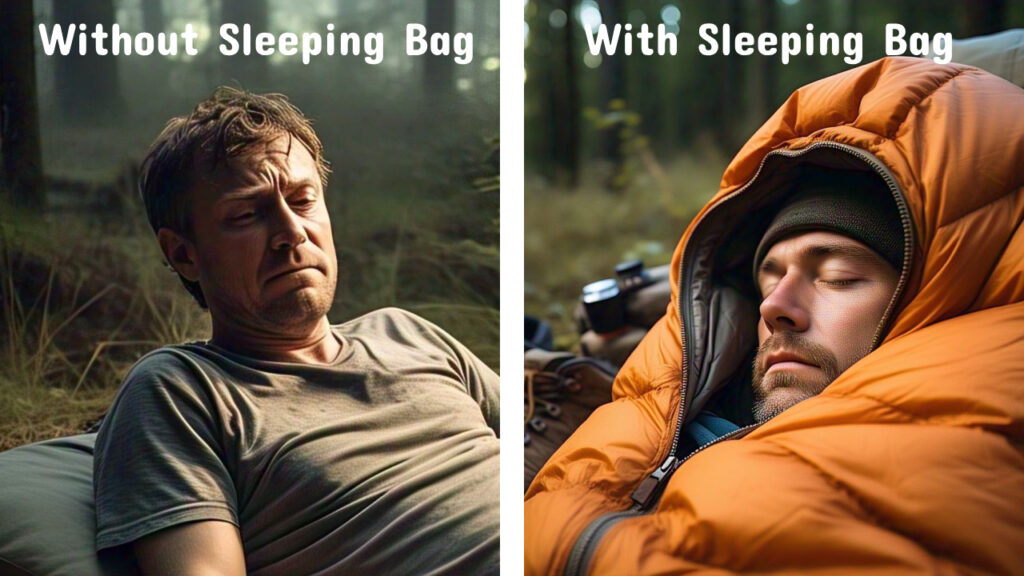
A sleeping bag’s enclosed design also reduces exposure to allergens, insects, and outdoor debris.
This extra layer of protection can prevent minor irritations or allergic reactions, ensuring a cleaner, healthier sleep environment.
For those with sensitive skin or respiratory concerns, this benefit can significantly enhance comfort and well-being.
When used correctly, a sleeping bag’s snug fit supports your body and limits excessive movement, which can help prevent waking up with soreness.
In this sense, the sleeping bag acts as a stabilizer, keeping you warm and reducing the likelihood of strains caused by shifting in your sleep.
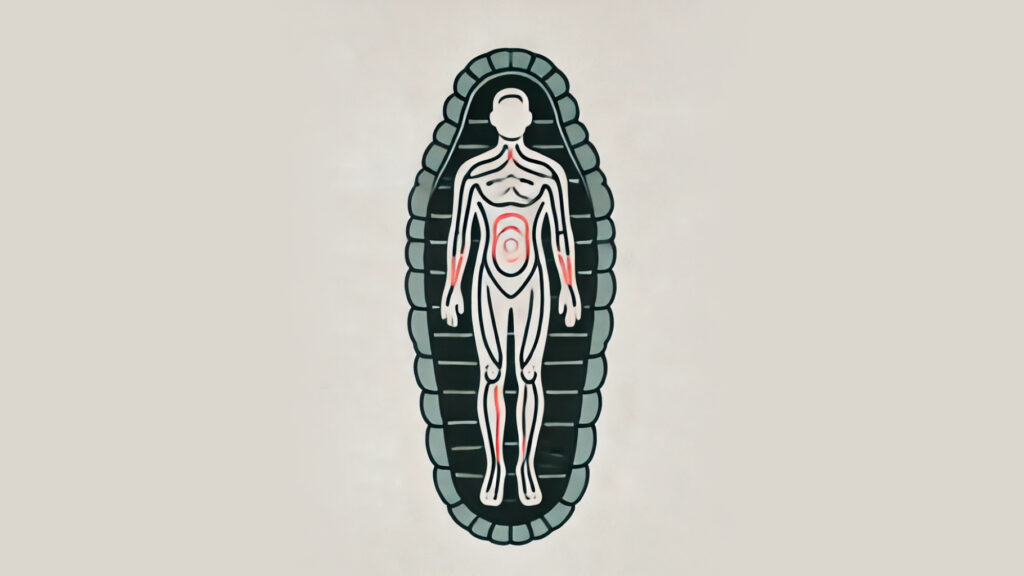
On the other hand, if the bag is too confining or not well-matched to your body size, it can force you into awkward positions.
This tightness may restrict natural movement and proper body alignment, which could lead to twisting of the neck, shoulders, or lower back—ultimately causing stiffness or soreness over time.
So while sleeping bag does have its benefits, it isn’t straight forward.
V. How to Sleep Comfortably in a Sleeping Bag
Sleeping comfortably in a sleeping bag comes down to various things.
This includes choosing the right sleeping bag, preparing your environment, adjusting your sleeping bag and using accessories like pillows or neck support.
Let’s explore the details.
Choosing the Right Sleeping Bag
Choosing the right sleeping bag means balancing several key factors that directly impact your sleep comfort.
Consider the following elements:
1. Climate:

- For cold weather, opt for bags with extra insulation to prevent cold spots.
- In warmer climates, choose bags with higher breathability to avoid overheating.
2. Insulation Type:
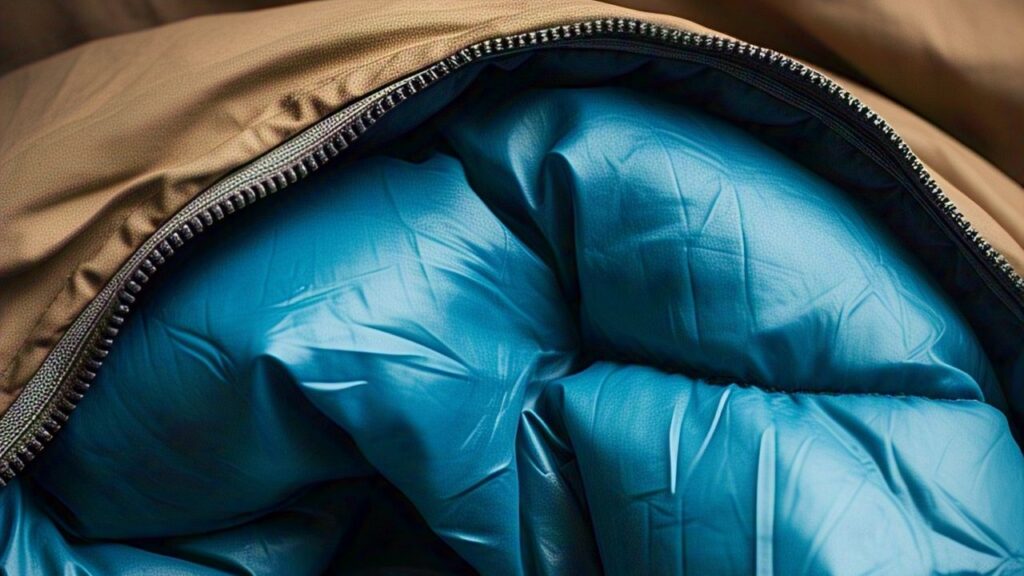
- Down insulation offers warmth and lightness but may lose efficiency when damp.
- Synthetic insulation performs well in humid conditions and maintains heat even if slightly moist.
3. Shape/Design:

- Mummy bags improve heat retention by hugging your body, but may feel restrictive.
- Rectangular bags provide more space for movement, ideal for those who change positions frequently.
4. Body Size/Type:

- Ensure the bag fits your height and width; a snug fit prevents excess movement and misalignment.
- Consider bags with adjustable features for a custom fit if you have unique body proportions.
5. Sleeping Style:

- Back sleepers may benefit from a bag that supports a straight posture.
- Side sleepers require extra room around the shoulders and hips to avoid pressure points.
- Stomach sleepers might need a less constricted design to prevent undue strain on the spine.
Note: We don’t recommend sleeping on your stomach as it can cause various medical complications on the long run.
Look for thoughtful extras like draft collars, zipper designs that allow for ventilation, and internal pockets for small essentials.
Preparing Your Sleeping Environment
A solid sleeping environment starts with proper ground insulation.
Use a high-quality sleeping pad or an insulated mat beneath your sleeping bag.
This not only cushions your body from uneven, cold ground but also creates a barrier against moisture.

For extra protection, consider placing a groundsheet or tarp under your pad to keep out dampness and dirt.
Location matters, too. Choose a flat, dry area free of rocks, sticks, or other hazards. A clear space minimizes the risk of discomfort or injury during the night.
If you’re in an insect-prone area, set up near natural wind breaks or use a bug net to keep critters at bay.
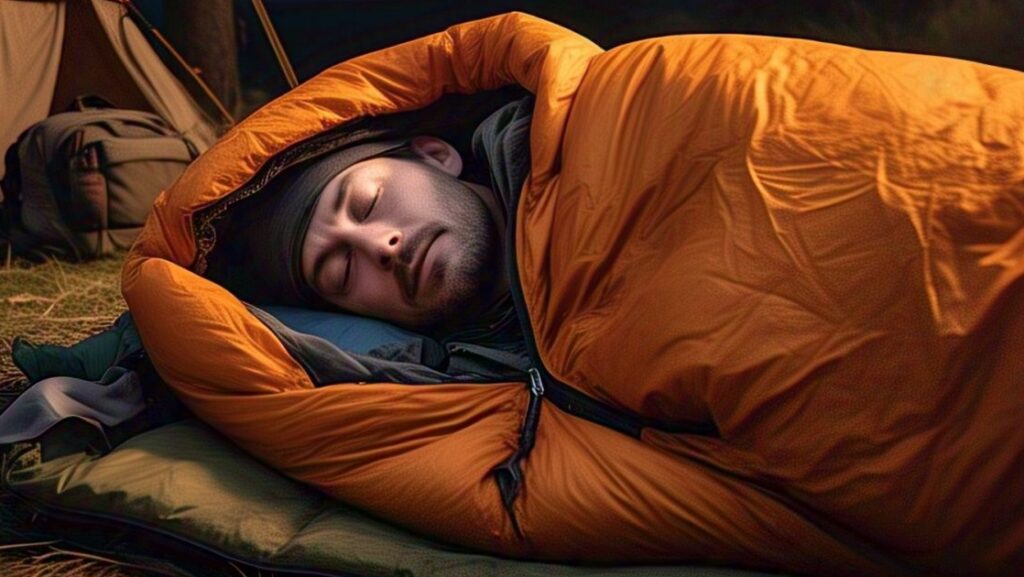
Ventilation is essential for managing condensation and ensuring a comfortable sleep.
Without proper airflow, moisture from your breath can build up inside the bag, reducing insulation and making you feel clammy.
Here are some practical techniques:
- Open Zippers Strategically: Partially unzip the bag to allow a controlled release of moisture without sacrificing too much warmth.
- Mesh Liners: Use a breathable liner that promotes airflow and helps wick moisture away.
- Proper Orientation: Set up your sleeping area so that it benefits from gentle, natural airflow. Avoid direct, strong winds but ensure some circulation around your setup.
- Adjustable Vent Features: Consider sleeping bags with built-in ventilation features like draft collars or adjustable vents that let you fine-tune airflow as conditions change.
Tips and Techniques for Better Sleep
Finding the perfect sleep setup in your sleeping bag is all about fine-tuning your environment and personal comfort.
Here are practical strategies to help you achieve a restful night:
1. Adjusting Your Sleeping Position:
Experiment with slight shifts in how you lie inside your bag.
A small change—like repositioning your arms or legs—can ease pressure points.
For most, a neutral position is best—lying on your back with your spine in a straight, natural line.

Keep your head aligned with your shoulders and your arms relaxed at your sides.
Small movements that ease pressure include gently shifting your legs apart or slightly bending your knees to release tension.
In contrast, twisting your torso too far, bending your arms awkwardly overhead, or tucking one shoulder under your body can lead to discomfort and stiffness by straining muscles and misaligning your spine.
2. Pillows and Neck Support:
A supportive pillow is essential. Consider a medium-firm pillow that fills the gap between your head and the bag.

This keeps your neck in line with your spine, whether you’re a back or side sleeper.
For those who find traditional pillows too bulky, an inflatable option can be adjusted to your comfort level and packed away easily.
3. Liners for Added Comfort:
A sleeping bag liner is a thin, removable fabric layer placed inside your sleeping bag.
When used, it adds an extra layer of softness, reduces friction against your skin, and can be easily removed for cleaning.
This simple addition not only enhances comfort but also allows you to adjust the overall warmth of your sleeping system without sacrificing the snug fit of your bag.
4. Choosing the Right Sleepwear:
Your choice of sleepwear is just as important.
The right clothing keeps you warm without causing overheating, while the wrong fabric can make you feel clammy or restrict movement.
Here’s a quick guide to help you choose:
Clothing Item | Type |
|---|---|
Moisture-Wicking Tank Top | Lightweight, moisture-wicking |
Merino Wool Long-Sleeve Top | Lightweight, moisture-wicking |
Synthetic Thermal Leggings | Lightweight thermal |
Heavy Cotton Sweatshirt | Bulky (generally avoid) |
Fleece Joggers | Moderately bulky (use with caution) |
Athletic Shorts | Lightweight (best for warm nights) |
5. Additional Comfort Accessories:
Consider adding small extras to customize your sleep.
A body pillow or a small cushion can support your lower back or hips, reducing any unwanted pressure.
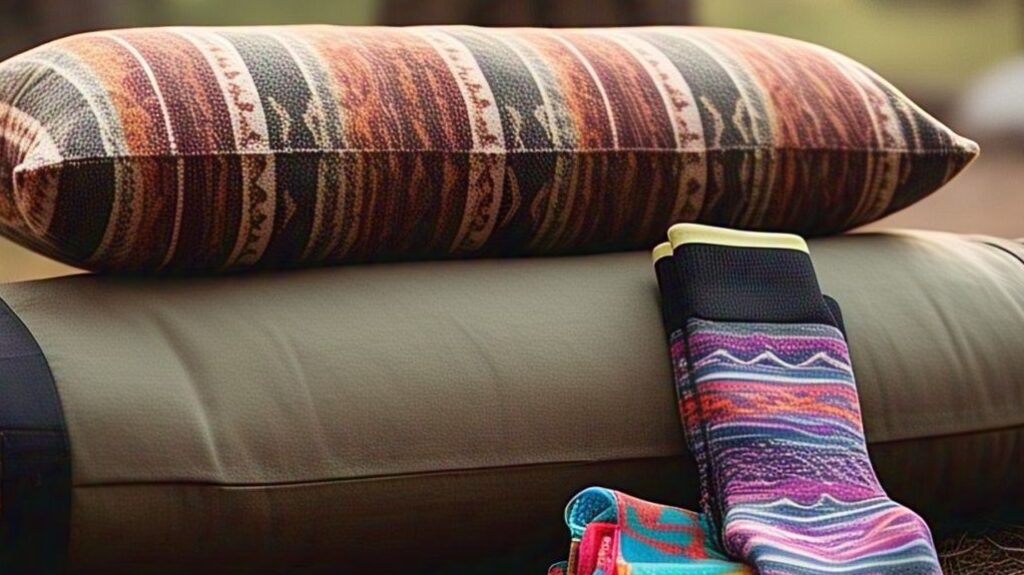
Compression socks might help if you’re prone to poor circulation in cold conditions.
These little adjustments can transform your sleeping experience.
Conclusion
Sleeping in a bag can offer effective temperature control and protection while maintaining a compact, secure sleep environment.
However, it’s crucial to balance these benefits against risks like overheating and awkward body alignment.
By selecting a sleeping bag that matches your climate, body type, and sleeping style—and by optimizing your setup with proper ventilation, padding, and accessories—you can enhance your sleep quality and overall comfort.
Evaluate your needs, adjust your setup, and choose wisely to ensure a safe, restful night.
Note that your sleeping bag should be in good condition to support a comfortable sleep.
You Might Also Like
How to Fold/Roll & Store a Sleeping Bag (With Video)
How to Wash and Care for Your Sleeping Bag Like a Pro?
Car Camping? These 5 Sleeping Bags Rock!
Frequently Asked Questions (FAQs)
Are sleep bags safer than blankets?
Sleep bags provide enclosed insulation that traps heat and shields you from insects and ground chill, making them safer in cold conditions.
Is it bad to have a sleeping bag too long?
A sleeping bag that’s too long may create gaps that reduce its insulation efficiency and allow cold air circulation.
What is the best alternative to a sleeping bag?
An insulated quilt or a layered system combining a quality sleeping pad with thermal blankets offers effective warmth and flexibility.
Should you wear socks in a sleeping bag?
Wearing socks can help keep your feet warm, but choose comfortable, non-restrictive socks to ensure proper circulation.
What to wear under a sleeping bag?
Opt for moisture-wicking, breathable base layers made of synthetic fibers or merino wool to maintain warmth without overheating.


